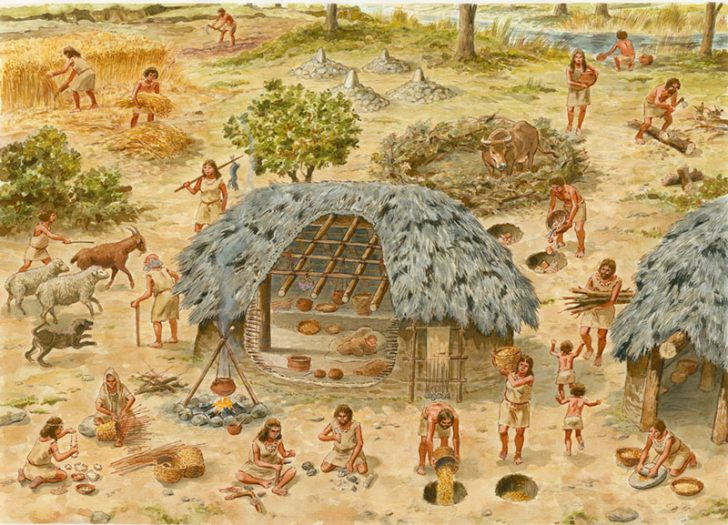To understand what is the difference between the Paleolithic and Neolithic periods, it is crucial to first grasp the basics of each era. The Paleolithic period, also known as the Old Stone Age, began around 2.5 million years ago and lasted until approximately 10,000 BC. This era was marked by the use of rudimentary stone tools and a hunter-gatherer lifestyle.

History / While the Paleolithic period, AKA the Old Stone Age, began around 2.5 million years ago, the Neolithic period - the New Stone Age - began around 10,000 BC.
On the other hand, the Neolithic period, or New Stone Age, began around 10,000 BC and continued until about 3,000 BC. This period is characterized by the advent of agriculture, the domestication of animals, and the development of more sophisticated stone tools. The shift from a nomadic to a settled lifestyle marked a significant turning point in human history.
What is the Difference Between the Paleolithic and Neolithic Periods in Lifestyle?
A major difference between the Paleolithic and Neolithic periods lies in lifestyle and subsistence. During the Paleolithic era, humans lived in small, mobile groups and relied on hunting and gathering for their food. They moved frequently in search of resources and shelter, making use of natural features like caves.
In contrast, the Neolithic period saw the rise of settled communities. People began to cultivate crops and domesticate animals, leading to a more stable food supply. This agricultural revolution allowed humans to build permanent homes and form larger, more complex societies.
Differences in Tools and Technology
Another key difference between the Paleolithic and Neolithic periods is found in their tools and technology. Paleolithic people used simple, chipped stone tools such as hand axes and flint knives. These tools were basic but effective for hunting and processing food.

The Talks / While the Paleolithic people used simple tools and technology, the Neolithic folks came up with more advanced tools.
Neolithic people, however, developed more advanced tools and techniques. They polished stone to create more durable tools and began to craft pottery and textiles. The invention of the plow and the wheel further revolutionized agriculture and transportation, fostering technological and societal advancements.
Differences in Social Structure and Organization
The social structure and organization of societies also evolved significantly between the Paleolithic and Neolithic periods. In the Paleolithic era, social groups were small and egalitarian. Everyone in the group had to contribute to survival, and there were few distinctions in social status.
In the Neolithic period, the establishment of permanent settlements led to more complex social structures. Surplus food production allowed for the specialization of labor. Individuals took on roles such as farmers, artisans, and traders. This specialization, along with the accumulation of resources, gave rise to social hierarchies and the development of governance systems.
The Difference in Art and Culture
Art and cultural expression differed between the two periods as well. Paleolithic art is best known for its cave paintings, carvings, and portable art objects like figurines.

GTN / Typically, the artworks of Paleolithic people depicted animals and human figures, reflecting the hunter-gatherer way of life.
Neolithic art, however, included pottery, woven textiles, and more permanent forms of architecture like megalithic structures. The artistic focus shifted towards geometric patterns and symbols, indicating a more settled and structured way of life. The development of writing systems towards the end of the Neolithic period marked the beginning of recorded history.
So, what is the difference between the Paleolithic and Neolithic periods? Well, it is a journey from survival to civilization. The Paleolithic period was all about adapting to and surviving in a wild world through hunting and gathering. The Neolithic period marked the dawn of agriculture, settlement, and societal complexity.




